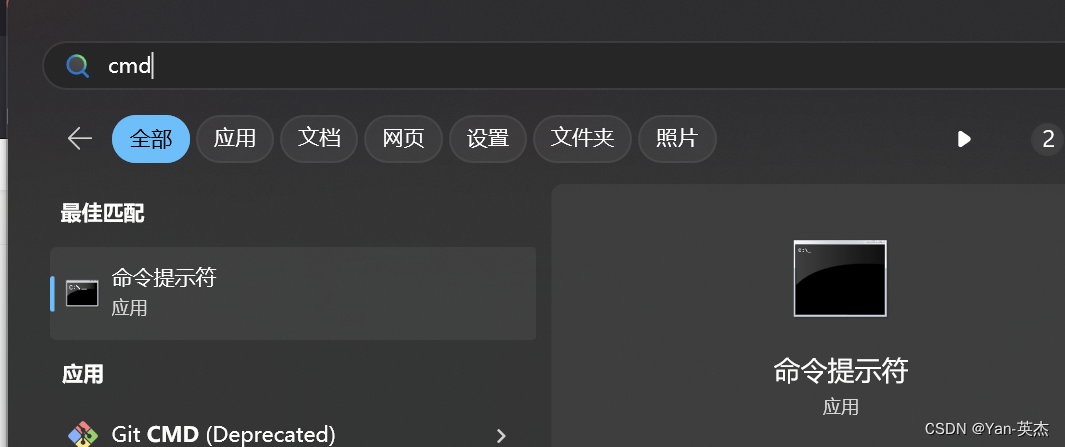【BUG】已解决:TypeError: expected string or bytes-like object
TypeError: expected string or bytes-like object
目录
TypeError: expected string or bytes-like object
欢迎来到英杰社区![]() https://bbs.csdn.net/topics/617804998
https://bbs.csdn.net/topics/617804998
欢迎来到我的主页,我是博主英杰,211科班出身,就职于医疗科技公司,热衷分享知识,武汉城市开发者社区主理人
擅长.net、C++、python开发, 如果遇到技术问题,即可私聊博主,博主一对一为您解答
修改代码、商务合作:
Yan--yingjie
Yan--yingjie
Yan--yingjie
【常见模块错误】
如果出现模块错误

进入控制台输入:建议使用国内镜像源
pip install 模块名称 -i https://mirrors.aliyun.com/pypi/simple
我大致罗列了以下几种国内镜像源:
清华大学
https://pypi.tuna.tsinghua.edu.cn/simple
阿里云
https://mirrors.aliyun.com/pypi/simple/
豆瓣
https://pypi.douban.com/simple/
百度云
https://mirror.baidu.com/pypi/simple/
中科大
https://pypi.mirrors.ustc.edu.cn/simple/
华为云
https://mirrors.huaweicloud.com/repository/pypi/simple/
腾讯云
https://mirrors.cloud.tencent.com/pypi/simple/【解决方案】
在Python编程中,当遇到“TypeError: expected string or bytes-like object”错误时,通常是因为函数或方法期望一个字符串(string)或类似字节序列(bytes-like object)的对象,但实际传递给它的却是其他类型的对象。这种错误可能出现在多种场景中,例如使用正则表达式、文件读取等操作时。
常见原因及解决方法
- 使用正则表达式时:
- 正则表达式函数如
re.sub ()和re.findall ()要求模式(pattern)为字符串类型,而被匹配的内容可以是字符串或字节对象。 - 解决方法:确保模式为字符串类型。例如:
- 正则表达式函数如
import re
text = "Hello, world!"
pattern = "world"
result = re.sub (pattern, "Python", text)
如果模式是字节对象,则需要将其转换为字符串。
- 文件读取时:
- 当打开文件进行读取时,如果指定的模式不正确,可能会导致此错误。
- 解决方法:检查并确保文件打开时的模式正确。例如:
with open("file.txt ", "r") as file:
content = file.read ()
如果需要以二进制模式读取文件,应使用"rb"模式。
- 编码和解码操作时:
- 在进行编码或解码操作时,如果传入的是非字符串类型,会引发此错误。
- 解决方法:将字符串转换为字节对象,或者在解码时指定正确的编码格式。例如:
message = "Hello, World!"
encoded_message = message.encode ('utf-8')
decoded_message = encoded_message.decode ('utf-8')
或者直接使用str.encode ()方法将字符串编码为字节对象。
- 内存视图操作时:
- 使用
memoryview创建内存视图时,如果传入的是字符串类型,也会引发此错误。 - 解决方法:将字符串转换为字节对象。例如:
- 使用
s = "example"
m = memoryview(s.encode ())
这样可以确保传递给memoryview的是字节对象。
示例代码
以下是一个完整的示例,展示了如何处理不同场景下的“TypeError: expected string or bytes-like object”错误:
import re
# 使用正则表达式
text = "Hello, world!"
pattern = "world"
result = re.sub (pattern, "Python", text) # 正确使用字符串作为模式
# 文件读取
with open("file.txt ", "r") as file:
content = file.read () # 默认以文本模式读取
# 编码和解码
message = "Hello, World!"
encoded_message = message.encode ('utf-8')
decoded_message = encoded_message.decode ('utf-8')
# 内存视图操作
s = "example"
m = memoryview(s.encode ()) # 确保传递给memoryview的是字节对象
print(result)
print(content)
print(decoded_message)
print(m)
通过以上示例和解释,我们可以更好地理解和解决在Python编程中遇到的“TypeError: expected string or bytes-like object”错误。
原文地址:https://blog.csdn.net/m0_73367097/article/details/140643172
免责声明:本站文章内容转载自网络资源,如本站内容侵犯了原著者的合法权益,可联系本站删除。更多内容请关注自学内容网(zxcms.com)!
